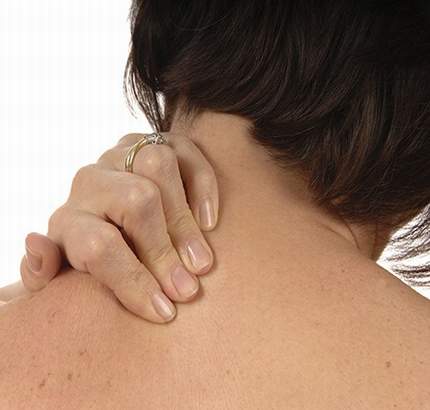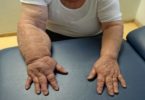What's in this article?
Cervical Dystonia Overview
Cervical dystonia, also called spasmodic torticollis, is a painful condition in which your neck muscles contract involuntarily, causing your head to twist or turn to one side. Cervical dystonia can also cause your head to uncontrollably tilt forward or backward.
A rare disorder that can occur at any age, even infancy, cervical dystonia most often occurs in middle-aged people, women more than men. Symptoms generally begin gradually and then reach a point where they don’t get substantially worse.
There is no cure for cervical dystonia. The disorder sometimes resolves without treatment, but sustained remissions are uncommon. Injecting botulinum toxin into the affected muscles often reduces the signs and symptoms of cervical dystonia. Surgery may be appropriate in a few cases.
Symptoms of Cervical Dystonia
Cervical dystonia causes abnormal muscle contractions in the neck which can lead to the head and neck twisting (torticollis) or being pulled forwards (antecollis), backwards (retrocollis), or sideways (laterocollis). Symptoms may vary from mild to severe and the muscular spasms may result in pain and discomfort. Cervical dystonia often worsens during periods of stress or whilst walking and typically improve with rest, sleep or sensory tricks (geste antagoniste). For example people with cervical dystonia may find that placing a hand on the side of the face, chin, or back of the head, momentarily relieves the abnormal dystonic posturing.
Cause of Cervical Dystonia
Cervical dystonia may be primary (meaning that it is the only apparent neurological disorder, with or without a family history) or be brought about by secondary causes such as physical trauma. Cases of inherited cervical dystonia may occur in conjunction with early-onset generalized dystonia, which is associated with the DYT1 gene.
Risk factors of Cervical Dystonia
Risk factors for cervical dystonia include:
- Age. While the disorder can occur in people of any age, even children, it most commonly begins between the ages of 40 and 70.
- Sex. Women are more likely to develop cervical dystonia than are men.
- Family history. If a close family member has cervical dystonia or some other type of dystonia, you are at higher risk of developing the disorder.
Treatment of Cervical Dystonia
Treatment for cervical dystonia usually involves regular injections administered by a neurologist. Some people also find oral medication helpful. Sensory tricks (e.g. touching a part of the head with a finger) and relaxation techniques may also be helpful as coping strategies.
Unfortunately there is not yet a cure for cervical dystonia. However, in the vast majority of cases, dystonia does not impact intelligence or shorten a person’s life span. Most people do manage to develop successful strategies for living with dystonia combining treatment with pain control and sensory tricks to help with social situations.





